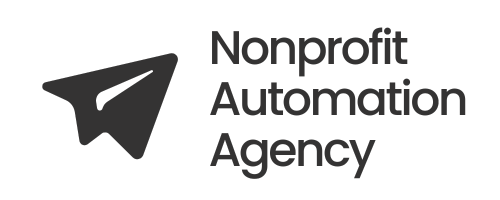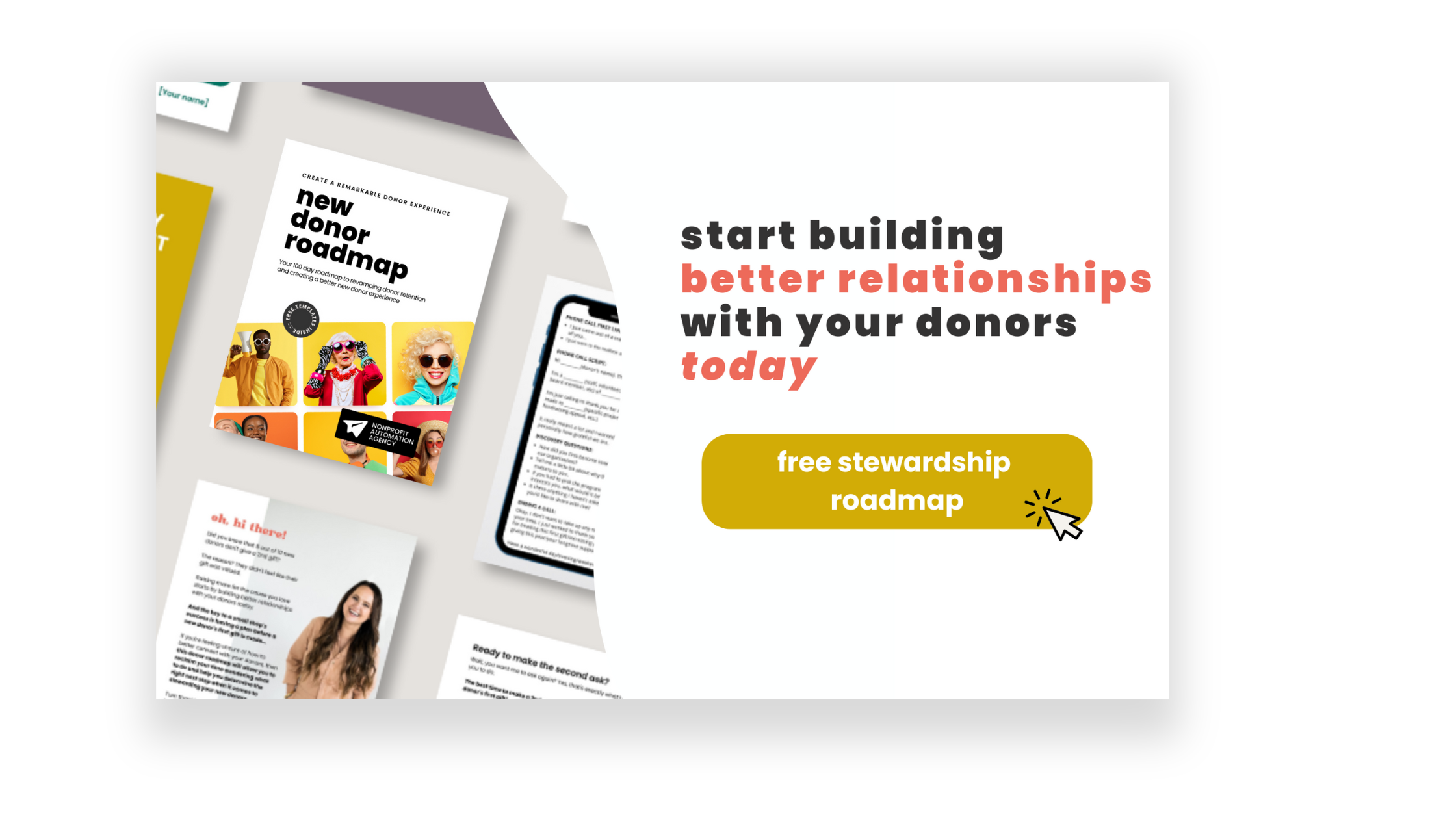The 5 donor stewardship automations that every nonprofit needs to save time
You know that “oh no, I forgot to follow up” moment?
Yeah, same.
And it’s not because you don’t care—it’s because you’re juggling 47 other things, and “send thank you” somehow didn’t make it onto today’s fire list.
But here’s the good news: you don’t have to choose between heartfelt stewardship and your sanity.
Automation can help you stay connected with your donors without dropping the ball or losing the human touch.
Let’s dig into 5 simple-but-powerful automation hacks that’ll save you time, boost retention, and make you look like the organized fundraising wizard you are.
1. Instant gratitude: going beyond gift acknowledgements
Don’t let donations sit in inbox limbo.
Set up an immediate thank-you email (yes, even outside your CRM) that goes out the moment a gift is received. Pair it with a quick story or impact stat and you’ve got a feel-good moment that doesn’t feel robotic.
You can set up an automated email that triggers an email being sent to your draft box in your email.
A bit more casual. But quick, easy and VERY personal.
✨ Want to try something else? Use Zapier to create a follow-up task or notify a team member when a high-value gift is received—so a personal touch (like a handwritten note or call) never gets missed.
THE BOTTOM LINE
Automating donor thank-you emails is one of the easiest and most effective automated donor communication strategies for retention.
2. Welcome new donors with a simple 3-email sequence
That first gift is your moment to shine—and set the tone for future giving.
Create a short welcome series for new donors that covers:
Thank you + your mission (warm fuzzies)
How their gift is being used (impact!)
Ways to stay involved (social, volunteering, etc.)
Write it once, automate it forever. Boom.
Here’s a deep dive in how to create a new donor welcome series.
Why this matters: A solid welcome sequence boosts long-term donor engagement and builds trust right from the start.
3. Monthly donor love, on repeat
Your sustainers are gold. Treat them like it—without adding more to your plate.
Set up a recurring monthly email that:
Celebrates progress their gifts make possible
Shares behind-the-scenes stories or photos
Reminds them how appreciated they are
Not sure what to write? Pull from your newsletter or blog and repurpose. The key is consistency, not complexity.
✨ Pro tip: Repurpose content from your newsletter or blog to save even more time.
THE BOTTOM LINE
Use automated monthly donor emails to increase retention and deepen donor relationships.
4. Lapsed donor nudge campaign
Before you start stressing about acquiring new donors, ask: have I followed up with the ones who already love us?
Build a simple automation to check for donors who haven’t given in 9–12 months and send a:
"We miss you!" email
Impact update
Low-barrier CTA to give again or reconnect
Even better? Add a reminder for you or a board member to send a handwritten card or make a quick call.
5. Survey → Segmentation → Stewardship Goldmine
Want to personalize without spending hours combing spreadsheets?
Set up an automated donor survey that feeds responses into your CRM or email platform. Ask:
Why they give
What stories they want to hear
How they prefer to be contacted
Then segment your email list based on those answers—and watch your engagement climb.
THE BOTTOM LINE
Automating donor segmentation helps personalize stewardship and improve nonprofit email marketing performance.
A few final thoughts
Automating your stewardship isn’t about replacing the human touch—it’s about protecting it. Giving yourself the breathing room to follow through, show up consistently, and build relationships that last.
Because donor retention doesn’t come from a single thank-you. It comes from making people feel seen, valued, and part of the mission.
Your future self—and your donors—will thank you.
Need support setting up these workflows? Book a demo and we’ll map out the best donor stewardship automations for your org.


